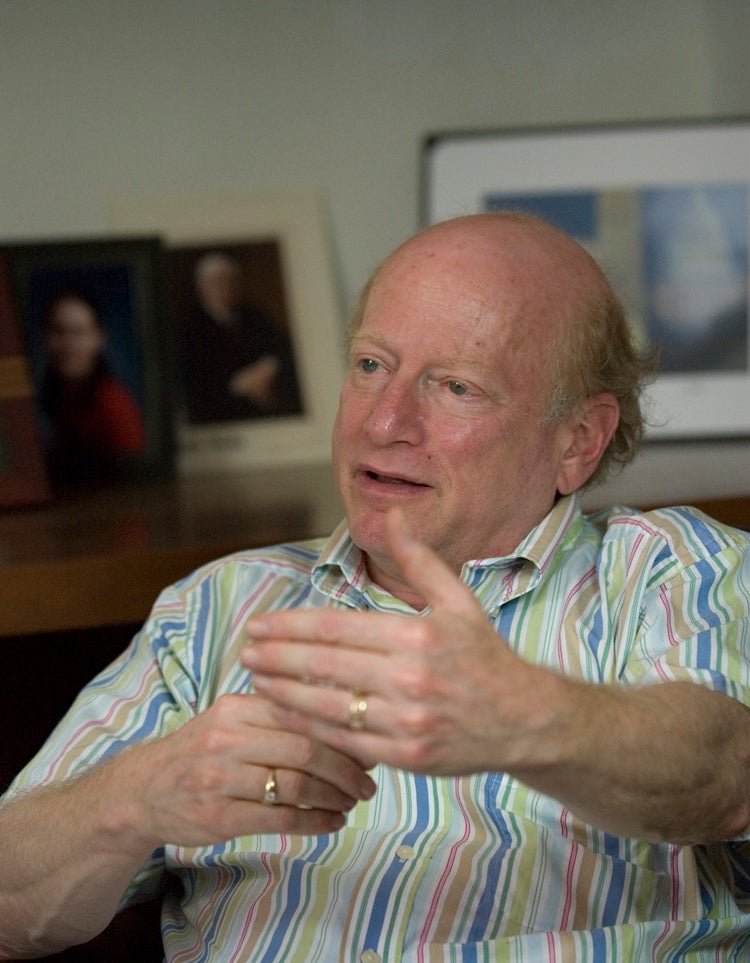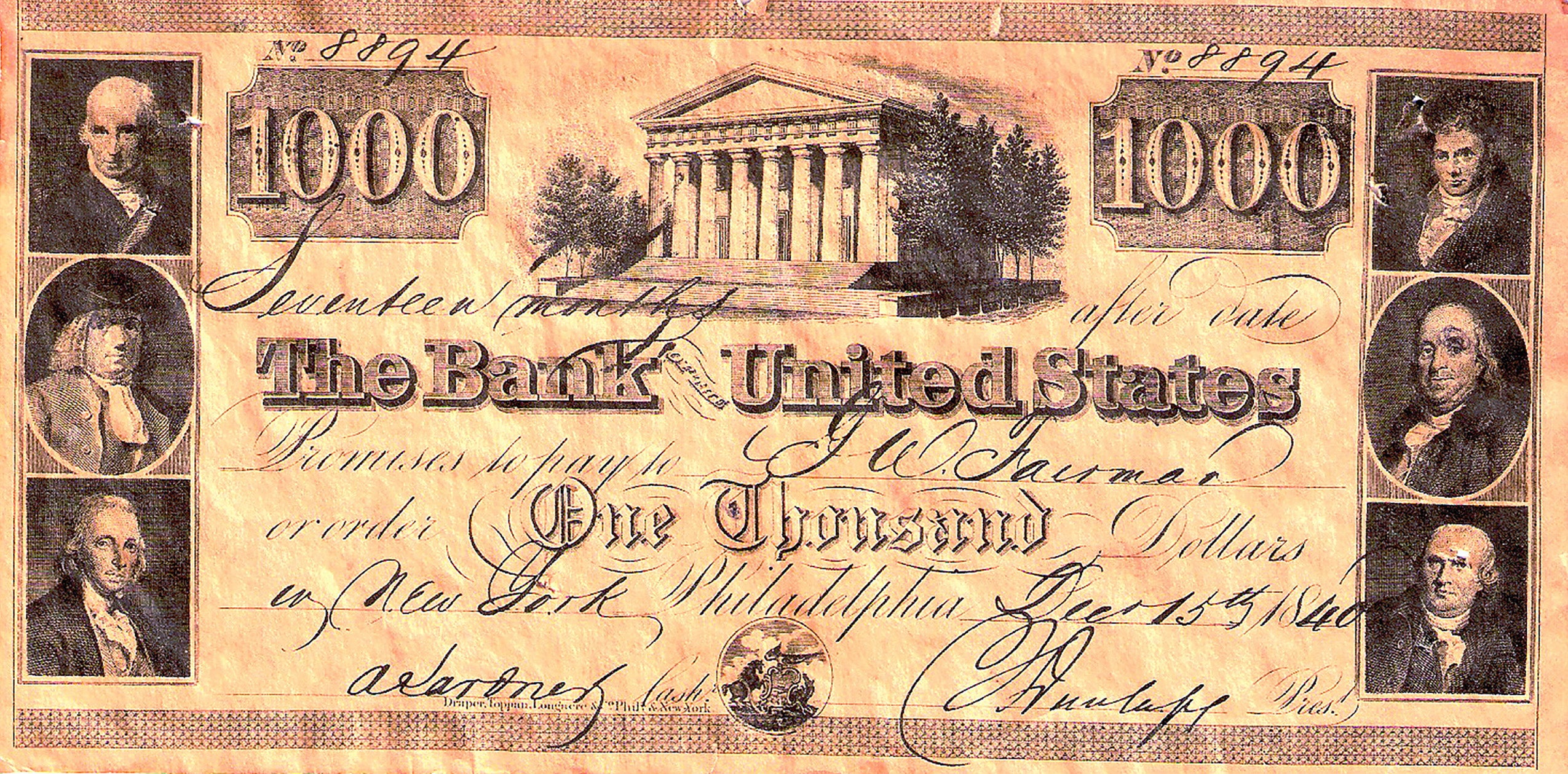
Mark Tushnet, the William Nelson Cromwell Professor of Law at Harvard Law School, is a leading scholar of constitutional law and legal history.
This year marks the 200th anniversary of U.S. Chief Justice John Marshall’s unanimous decision in McCulloch v. Maryland, an 1819 case that paved the way for the modern administrative state and established the supremacy of federal over state law. Two centuries later, politicians, jurists, and scholars continue to debate the breadth of Congress’s authority and the rights of states to regulate their own affairs.
The case began in 1818, when Maryland attempted to tax the operations of the Second National Bank of the United States. Congress had voted to charter the bank and its predecessor despite any explicit mention in the Constitution of its authority to do so, raising the ire of states’ rights advocates, including President Thomas Jefferson and, later, Andrew Jackson. When the ensuing lawsuit reached the Supreme Court, Chief Justice Marshall took the opportunity, as Harvard Law Professor Mark Tushnet observed in his book “I Dissent: Great Opposing Opinions in Landmark Supreme Court Cases,” “to set forth his nationalist constitutional views.”
Decrying the “baneful influence of … narrow construction,” Marshall wrote for the Court that the Constitution’s “necessary and proper” clause gave Congress discretion to take measures “convenient” to implement its expressly enumerated powers. “Let the end be legitimate,” Marshall wrote, “let it be within the scope of the constitution, and all means which are appropriate, which are plainly adapted to that end, which are not prohibited, but consist with the letter and spirit of the constitution, are constitutional.”
Citing the supremacy of congressional statutes over state laws, the Court similarly ruled against Maryland’s right to tax the national bank. “If the States may tax one instrument, employed by the Government in the execution of its powers … ,” Marshall wrote, “they may tax all the means employed by the Government to an excess which would defeat all the ends of Government. This was not intended by the American people. They did not design to make their Government dependent on the States.”
Harvard Law Today recently discussed the case and its legacy with Tushnet.
Q: Can you briefly summarize the issues at stake in McCulloch v. Maryland and the Marshall Court’s ruling?
A: There were two issues. The first was whether Congress had the power to create a national bank in the first place, and the second was, assuming so, did Maryland or other states have the power to impose taxes on the bank’s operations?
The Court held that Congress did have the power to create a bank because of its usefulness in allowing transactions to be conducted throughout the country through a single bank. And that was based on the Court’s interpretation of express congressional powers taken together with the necessary and proper clause.
It then held that Maryland did not have the power to impose a tax on the operations of the bank because, as Marshall famously put it, “the power to tax is the power to destroy.” And if the Court acknowledged the state’s power to tax the bank, it put the operation of the bank at risk.
Q: Can you explain some of the background of the bank’s creation?
A: The background of the case goes back to the Constitutional Convention, where there was actually an express discussion of whether Congress would have the power to create corporations. There was a sense that perhaps there ought to be a national bank for what we would call infrastructure construction. The convention deliberately decided not to include a power to create corporations in the Constitution.
Immediately after the Constitution went into effect, however, Congress created the first national bank. Thomas Jefferson and Alexander Hamilton gave President Washington competing opinions about whether Congress had the authority to create the bank. Ultimately, Washington agreed with Hamilton that Congress could. The first national bank was in operation for 20 years before it expired. Congress ultimately decided to create a second bank, and that’s what was involved in McCulloch.
Q: How do we experience the longer-term legacy of Marshall’s decision today? In other words, had it been decided differently, how might the United States be different?
A: If the Court had held that Congress lacked the power to create the national bank because the necessary and proper clause could not cover what Congress did, it would’ve had a significant, restrictive impact on many of the actions taken not so much immediately after McCulloch, but in the three or four generations thereafter.
If McCulloch had gone the other way, there would have been another substantial set of arguments against the creation of the things that we now characterize as the modern administrative state. I put it that way because even within the framework of a narrow construction of the necessary and proper clause, some of the things that the modern administrative state does probably would survive.
I think the most obvious kinds of examples would include statutes dealing with labor relations and health and safety, and maybe even environmental regulations, where you don’t really need a necessary and proper analysis to support congressional power. The Court’s decision in McCulloch is helpful because it eases some of the arguments, but even with the narrower construction, a fair number of the things we now have probably would survive.
Q: Is the Marshall Court’s decision in McCulloch v. Maryland more important than its decision in Marbury v. Madison, which asserted the Supreme Court’s right to review the constitutionality of laws passed by Congress?
A: Yes, I do think it’s more important than Marbury because it licensed fairly expansive approaches to thinking about national power.
Marshall’s rejection of a narrow construction of the necessary and proper clause wasn’t essential to construing national power broadly. This is because what you need to get what we have today is a broad construction of Congress’s substantive powers, the power to regulate commerce among the states being the most obvious. Once you have those broad constructions, much of what modern Congresses have done is supported directly by those previsions and doesn’t need additional support from the necessary and proper clause.
But if you have support from the necessary and proper clause, as you can under McCulloch, it makes it easier to argue that the precise way in which Congress exercises its power is constitutionally justified.
Q: Can the ruling in this case be seen as an example of judicial activism, in which the Court deliberately embraced and promoted a particular view of national versus state power?
A: It is certainly compatible with the expansive vision of national power shared by Marshall and other, at that point, former Federalist thinkers. Whether the decision was motivated by approval of the national bank, it seems to me, or approval of the underlying policy, is even more complicated. Certainly, the decision was motivated by a vision of the national government as one with expansive power.
Q: There is a lot of commentary today about how “partisan” many believe the Supreme Court has become, from the nomination process through the many 5-to-4 decisions. Could something similar be said about the Court under Chief Justice Marshall, with Federalists and Whigs competing with Jeffersonians? Was there a view of America that was shared by one faction, and the Marshall Court served to further it?
A: Yes. The Marshall Court did have a vision of the scope of the national government that was associated with one political tradition, represented earlier by the Federalists, and later by the Whigs. And that was a vision inconsistent with the Jeffersonian and Jacksonian vision of the scope of national power.
The Court was an occasional focus of political controversy, I think not as regularly as it has become today. But it was drawn into political controversy precisely because of the difference in constitutional visions.
So, Marshall found himself attacked for the decision in McCulloch and chose to write some anonymous political pamphlets—what we would call op-eds today—defending what he had done. Jackson, of course, attacked the Court because of its efforts to rein him in.
So yes, there was some sort of high politics between the Court and its supporters on one side, and political tendencies in the political branches.
Q: Yet, despite the fact that Marshall and several of the Court’s associate justices had been appointed by President Jefferson, who had opposed the bank’s creation, this is among the Marshall Court’s many unanimous opinions. Why did the Jeffersonians on the Court not write dissents in cases like this?
A: The answer is complicated, but the core is that in this period, the criteria for choosing justices were much less focused on political ideology, or constitutional vision, than they have become. There was a great deal of ordinary party patronage, as if parties are coalitions, as well as consideration of geographic balance. Consequently, a Jeffersonian president would sometimes appoint a not-so-enthusiastic Jeffersonian justice to the Court.
Q: The famous attorney, orator and statesman Daniel Webster, who argued more than 200 cases before the Court, represented the bank in this case. How do you think he would do today?
A: The standards we have today for assessing legal talent or the talent of appellate advocacy are different from the standards they had then. Today, attorneys arguing before the Supreme Court have very limited time available to make their arguments. They have to frame them in particular ways that have become highly valued. Whereas then, argument time was essentially unlimited and people could be great advocates by being great orators and by painting an attractive picture for the Court, without making tight, crisp arguments.
Today, I think if somebody stood up and made the kind of argument that Webster ordinarily made, people would regard him as not a very good appellate advocate under contemporary circumstances. So, the short answer is, he was probably a great advocate for his time, but the criteria for what amounts to great advocacy have changed in ways that make the way he argued outdated.
Q: Are there ways or cases in which the issues being discussed in McCulloch v. Maryland are still being discussed, are still alive today?
A: It is rare today to find a case that rests as expressly and completely on the necessary and proper clause as McCulloch did. The reason is that today’s expansive interpretations of Congress’s substantive powers, the stuff that comes before the necessary and proper clause in Article I of the Constitution, are sufficient to justify what Congress has done. A case will get discussions mostly in dissent or separate opinions about what necessary and proper means, but mostly the discussions are about the scope of the substantive powers.
Q: What is your experience of teaching this case?
A: When I taught McCulloch in the past, I found it an extremely rich case for teaching purposes. Much richer for my purposes, at least, than Marbury v. Madison. You could take Marshall’s opinion and go through it, almost line by line, to help students understand what kinds of constitutional arguments were being made, and could be made today. It has, in many ways, a quite contemporary feel as an opinion. The rhetoric, the way of talking is different, of course, but the core ideas remain available to us today. So, as a teaching device, the case was for me extremely valuable.
